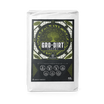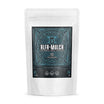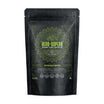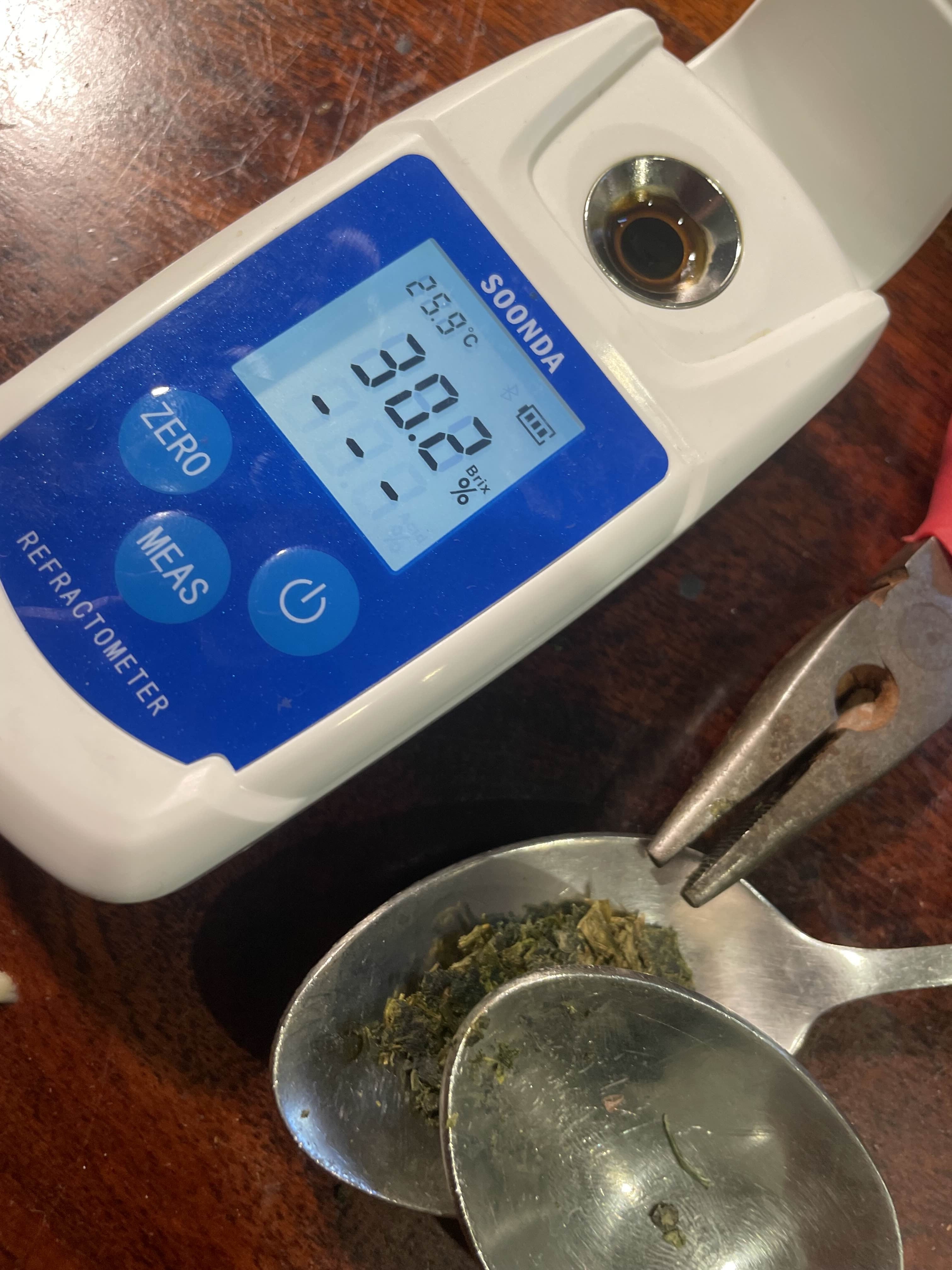ATP, Brix, and the Synergy of Soil-Plant Metabolism: Beyond Basic Nutrition
Most people think plants run on nutrients. They don’t.
ATP is the true engine—and how we fuel and guide it determines everything.
Introduction
Understanding the interplay between ATP (adenosine triphosphate), amino acids, and carbohydrates—and their roles within the plant/living media relationship—is essential for creating a sustainable, high-performance ecosystem. In our framework:
-
ATP is the energy currency powering life.
-
Carbohydrates serve as the fuel.
-
Amino acids deliver the language for cellular communication.
This approach goes beyond “nutrients alone” to emphasize a fully optimized metabolism, allowing us to biohack plants into truly resilient, super plants. Our research centers on the hypothesis that inputs boosting both soil microbes and plant metabolism can yield next-level outcomes in growth, quality, and resilience.
1. ATP: The Universal Energy Currency
In Microbes
-
Energy Production:
Microbes produce ATP via oxidative phosphorylation in aerobic conditions or through glycolysis and alternative pathways in anaerobic conditions. -
Metabolic Functions:
ATP is essential for nutrient uptake, macromolecule synthesis, and motility. -
Soil Interactions:
Active microbial communities break down organic matter, liberating essential nutrients. High-energy, efficient microbes translate to a high-functioning soil.
In Plants
-
Photosynthesis & Respiration:
ATP is generated in chloroplasts during light reactions and in mitochondria via respiration. This energy drives carbon fixation, growth, and stress adaptation. -
Nutrient Uptake & Growth:
Ion channels and active transport processes powered by ATP are critical for absorbing and distributing nutrients. When energy reserves are compromised, these systems become overwhelmed.
ATP is the engine driving every vital process. When both microbes and the plant operate at peak metabolic function, truly awesome results are unlocked.
2. Amino Acids and Carbohydrates: The Language and Fuel
If ATP is the vehicle of growth, then carbohydrates are the fuel—and amino acids are the map.
Amino Acids: The Language of Life
-
True Amino Acid Fertilizers vs. Chelates:
It’s crucial to distinguish between fertilizers that supply free-form, bioidentical amino acids and those offering amino-acid-chelated minerals. True amino acid fertilizers deliver molecules that plants can incorporate directly—saving ATP that would otherwise be spent converting inorganic nitrogen.
Note: When synthetics are merely bonded to amino acids (or organics are combined with synthetics), uptake might be boosted, but metabolic efficiency isn’t addressed once inside the plant. -
Energy Efficiency & Dual Benefits:
Direct assimilation of bioavailable amino acids bypasses the energy-intensive conversion of inorganic forms and simultaneously provides soil microbes with a readily metabolizable energy source. Moreover, amino acid transporters in the plant can be exploited to enhance cell multiplication, stress resistance, and even essential oil production. -
Premium Nitrogen – YAN:
Yeast Assimilable Nitrogen (YAN) sits at the top of the microbial food pyramid as a preferred nitrogen source—rapidly assimilable by microbes and easily taken up by plants. Yeast, as first-line decomposers (demonstrated in Korean Natural Farming), stimulate downstream microbial activity, ensuring an optimal nutrient cycle. Real hydrolyzed amino acids, as derived from plants, microbes and life forms, represent a food source that is "pro ATP" - and YAN.
Carbohydrates: The Fuel for Growth
-
Primary Energy Source:
Carbohydrates produced via photosynthesis are broken down to generate ATP. -
Structural & Storage Roles:
Carbs form cell walls (cellulose) and act as storage molecules (starch), underpinning both structural integrity and energy reserves.
High nutrient availability alone only supports subsistence—true biohacking elevates plants into “super plants” with optimized energy systems.
3. Overwhelming Plant Metabolism: The Pitfalls of Synthetic Inputs
Ion Channels & Metabolic Overload
-
Salts and Disruption:
High concentrations of synthetic nutrients (“end stage” compounds) can overwhelm ion channels, forcing the plant to expend extra ATP to restore balance and convert these inputs—reducing energy for valuable secondary compounds (like essential oils and flavor compounds). -
Suboptimal Energy Allocation:
Even if the plant absorbs synthetics readily, the energy required for detoxification and conversion can sap ATP, lowering BRIX levels and overall quality.
Insufficient Synergy of Mixed Inputs
-
Nutrients vs. Metabolic Biohacking:
Simply combining salts with amino acids or other biostimulants doesn’t guarantee synergy. Without a fully supported metabolism and robust microbial processes, plants remain in a state of subsistence. -
The Synthetic Short-Circuit:
Synthetic products often harm the soil microbiome—key to converting organic matter into bioavailable nutrients. Consequently, the plant must expend extra ATP to manage these disruptions, undermining long-term metabolic efficiency.
Relying on “fast food” inputs may yield a short-term boost but can lock you into a cycle of synthetics, diminishing soil vitality and true plant performance.
4. The Amplified Feedback Loop: Soil, Plant, and Exudates
Enhanced Exudate Production
Plants operating at high ATP and BRIX levels produce abundant root exudates (rich in sugars and amino acids) that fuel soil microbes. More carbohydrates and amino acids to share lead to a stronger root microbiome association.
Mutual Benefits
A thriving microbial community accelerates nutrient cycling, releasing premium nitrogen, metabolites, and secondary compounds (hormones, auxins, cytokines, enzymes) that further fuel plant growth.
Simultaneous Boost
Optimizing both soil health and plant metabolism concurrently amplifies this feedback loop:
Boost the biome → Boost the plant → Boosted plant feeds the biome → Further efficiency
5. Integrated R&D: Biohacking for Sustainable, Super Plants
High yields of epic-quality produce demand more than high NPK numbers. We must continually evaluate the jigsaw puzzle of plant physiology, soil microbiology, and organic chemistry—and how they interact.
-
Organic Chemistry:
Develop fertilizers that supply nutrients in bioidentical forms. -
Microbiology:
Enhance the soil microbiome to drive efficient nutrient cycling. -
Plant Physiology:
Optimize metabolic processes and ATP management so that plants thrive, not just survive. -
Soil Science:
Maintain a balanced ecosystem that supports both microbial health and plant growth.

6. Conclusion
We believe ATP is a game-changer for developing products that push plants beyond passive organics and the limitations of salts alone. True biohacking means optimizing the plant’s metabolic system—not merely supplying more nutrients.
By offering nutrients in truly assimilable forms (free-form amino acids, premium biostimulants) and avoiding synthetic inputs that overwhelm ion channels and disrupt microbial synergy, we foster a circular feedback loop:
-
High ATP production leads to increased BRIX, which promotes the release of beneficial root exudates.
-
Exudates nourish soil microbes, ensuring efficient nutrient cycling and premium nitrogen availability.
-
Plants thrive metabolically, resulting in resilient, high-quality yields.
Don’t just feed your plants. Upgrade them.
This holistic approach—integrating organic chemistry, microbiology, plant physiology, and soil science—represents the future of sustainable agriculture. It moves beyond subsistence nutrition to a high-octane metabolism, delivering long-term yield and superior quality.
Some of Our Notably Pro-ATP Products:
-
AQUA-MARINE Grow & Bloom
-
OCEAN-POTION Cal/Mag+
-
GREEN-SUPREME
-
RHIZO-MOJO
-
ANTI-MATTER
-
DARK-MATTER
-
HERB-SUPERB
-
STONE-AGE
































































Leave a comment
All comments are moderated before being published.
This site is protected by hCaptcha and the hCaptcha Privacy Policy and Terms of Service apply.